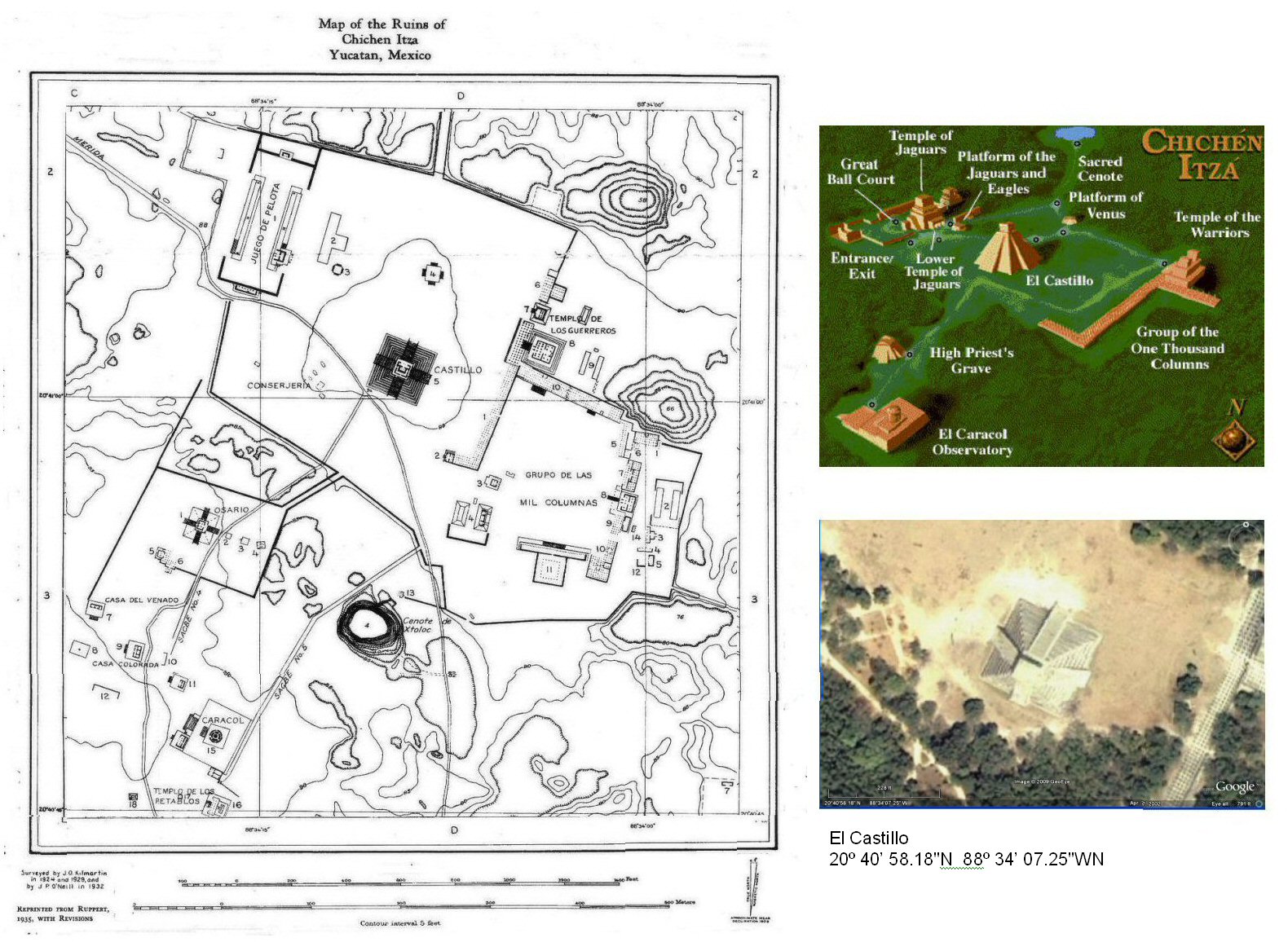
This essay is part of a series which begins by studying the dimensions of the "allotments" of Plato's Atlantis and finds the basic stade in use was a stade of 165 feet which was 100 Sumerian cubits of 19.8" and in describing the rectangular plain of 3,000 x 2,000 stades, the "stade" was a unit of 200 Sumerian cubits making 2,000 cubits per side for the allotment.
Studies were made of canals in Tabasco and Veracruz, Mexico, canals on the Bolivian Altiplano, then, since Sumerian units were also brought to Veracruz by the Spanish conquistadors who used a yard or Vara which was 33.0" and identical to the Sumerian yard of 33.0", the studies were extended to the city of Teotihuacan which was decidedly pre-Conquest and dates to 150 A.D.
Since accurate published survey material was not available for Teotihuacan, measurements were made by satellite using Google Earth.
Survey data has been found for sites in Yukatan, Mexico, at Chichen Itza and Tikal and this essay looks at these these measurements to see if any of them are consistent with "Sumerian" measurements.

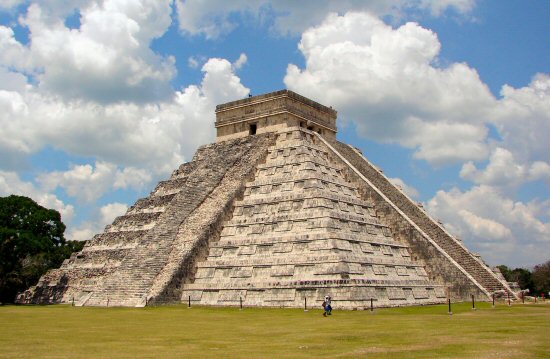
"El Castillo" or the Temple of Kukulcan as the pyramid is known.


Above, El Castillo in 1860 and El Castillo today.
The fundamental "Sumerian" units were a "shusi" of 0.66", link of 7.92", foot of 20 shusi = 13.2", cubit of 30 shusi = 19.8", yard of 50 shusi = 33.0", and double yard of 100 shusi = 66.0".
'Egyptian' cubits of 20.625" are sometimes found alongside 'Sumerian' cubits since they are related in the ration of 25/24.
The Megalithic Yard of 32.64" found by prof A. Thom in the British Isles was also related to the Sumerian yard in the manner of the Megalithic Yard relating to a year of 365.24 days while the Sumerian Yard of 33.0" related to the mathematical year of 360 days.
Drawings to a high degree of accuracy were found to be available freely from
above, The CyArk survey was done to an extremely high degree of accuracy.
The Cyark drawings were then printed and scaled measurements made by J.M. Allen to provide the interpretations
found below.
Although scaled measurements can be made from the drawings, some drawings had the additional advantage of
surveyed measurements incorporated into them.
We do not know which parts of ancient sites may have been set out according to a set plan or even to any
degree of accuracy and have to consider also that reconstructions may have been made due to ruinous states of
some buildings, but these scaled drawings suggest that the buildings were accurately planned according to a
system of "Sumerian" feet, yards and cubits, and corresponding multiples in "Egyptian" royal cubits and Mayan
"hunabs" which were 2 x "Egyptian" royal cubits.
Stop press, November 2016, new studies of the El Castillo pyramid at Chitzen Itza
n.b. in the preceding drawings, the scale bars have been reproduced in size appropriate to the drawings
Tiwanaku calendar
Atlantis stade
Atlantis cubits between Altiplano canals
Teotihuacan measuring unit
Teotihuacan measuring unit at the citadel
Monte Alban cubits measuring units
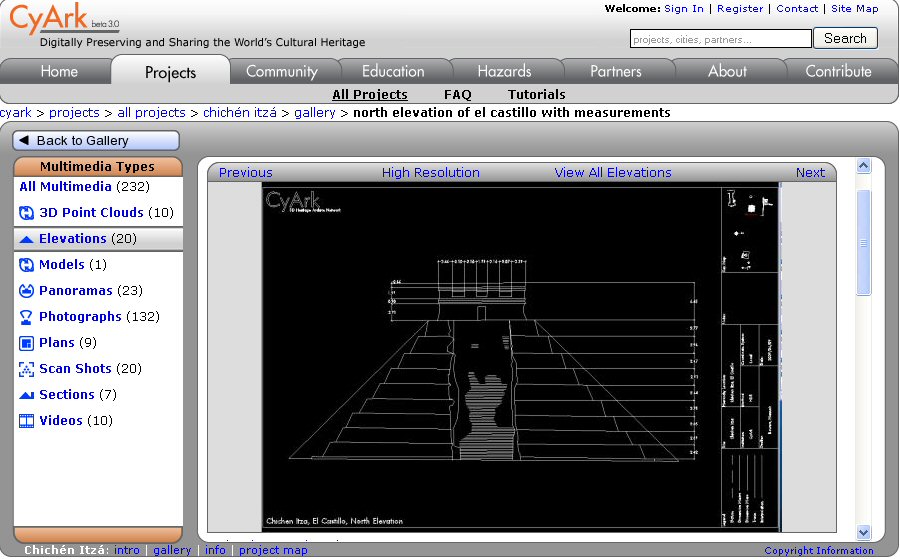
Cyark
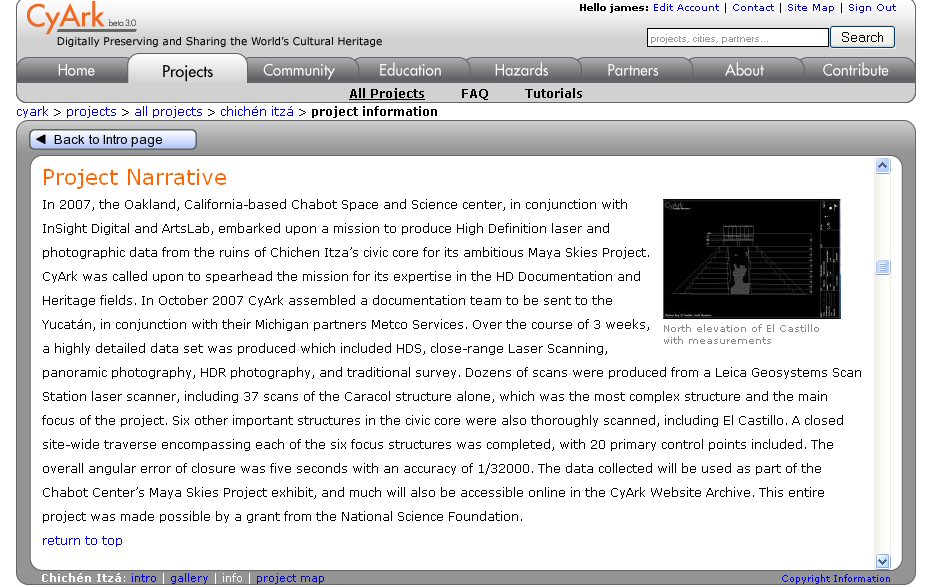
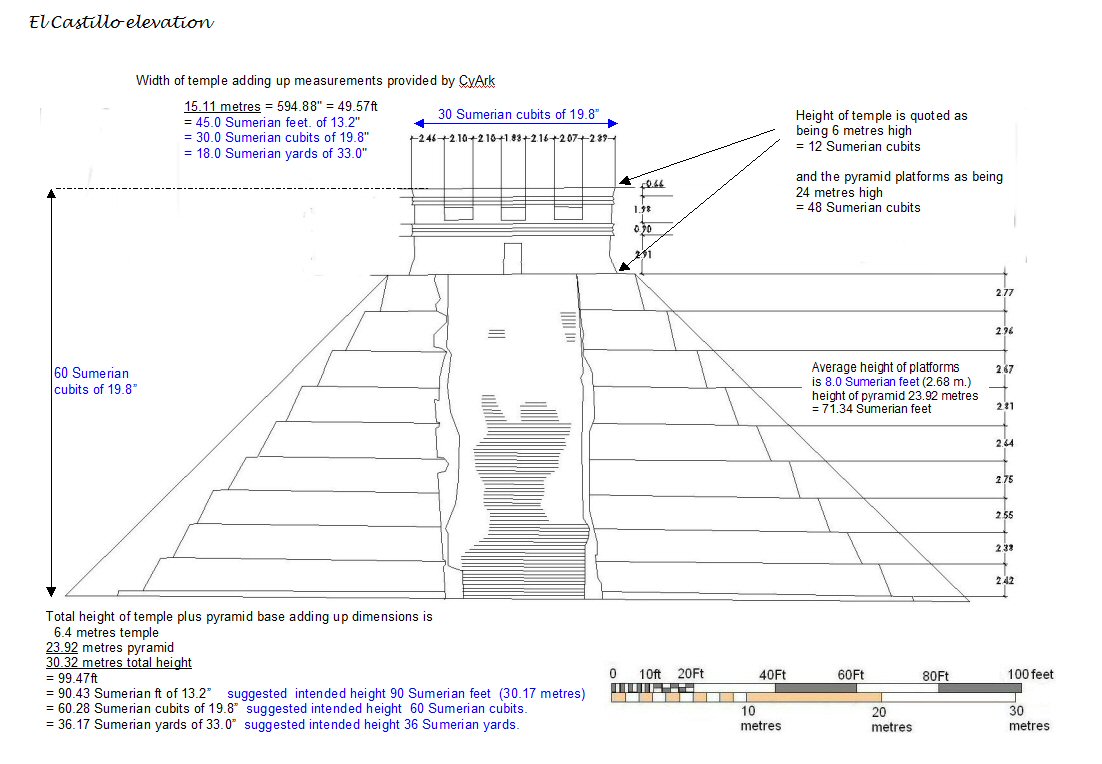
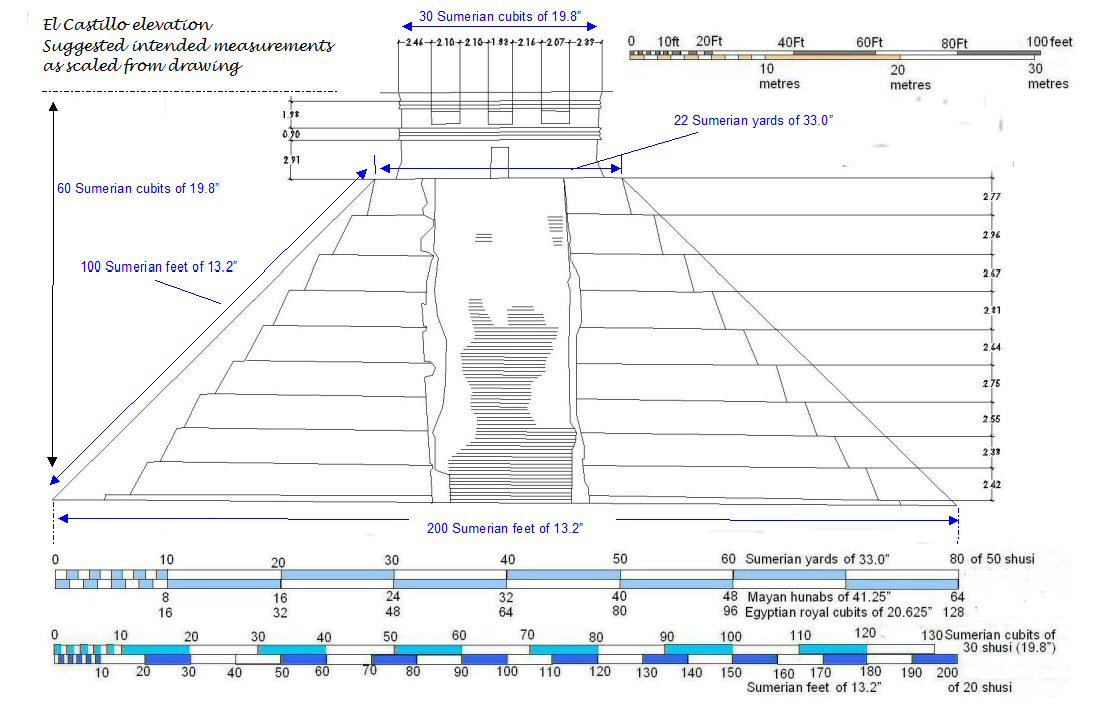
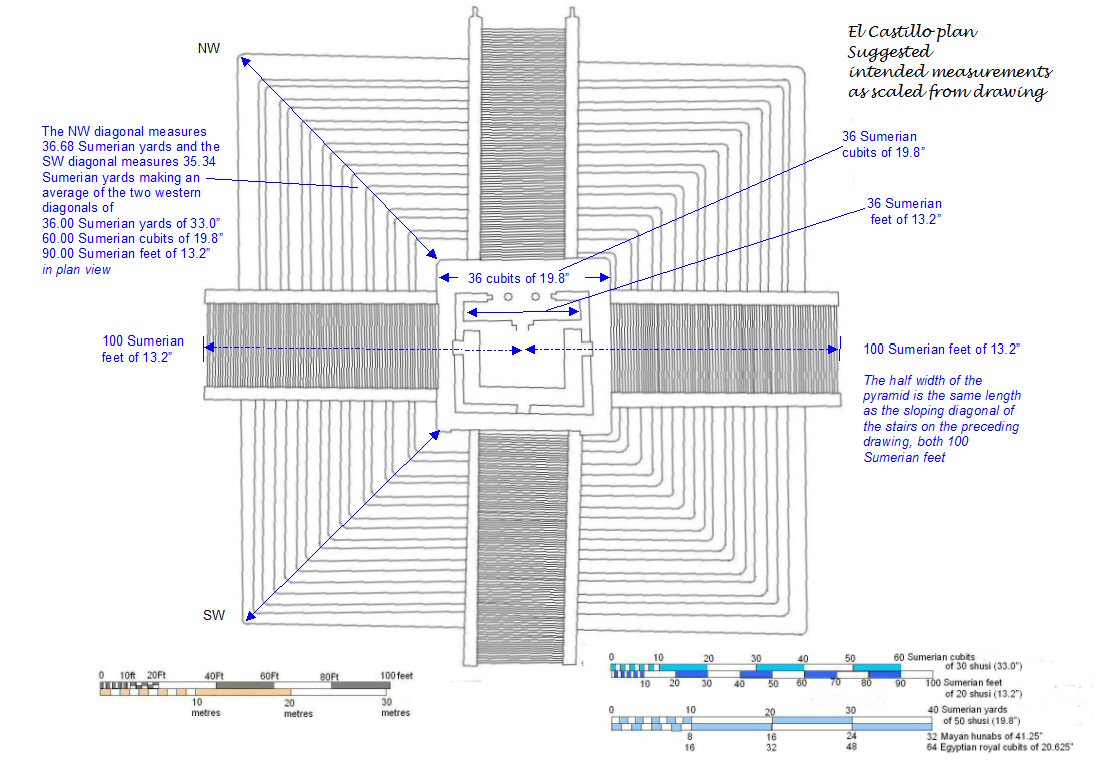
detect a smaller pyramid 33 ft tall at the center of the stepped pyramid
which
is the original first pyramid built on the site.
The first pyramid built was therefore 20 Sumerian cubits in height.
Source MSN News
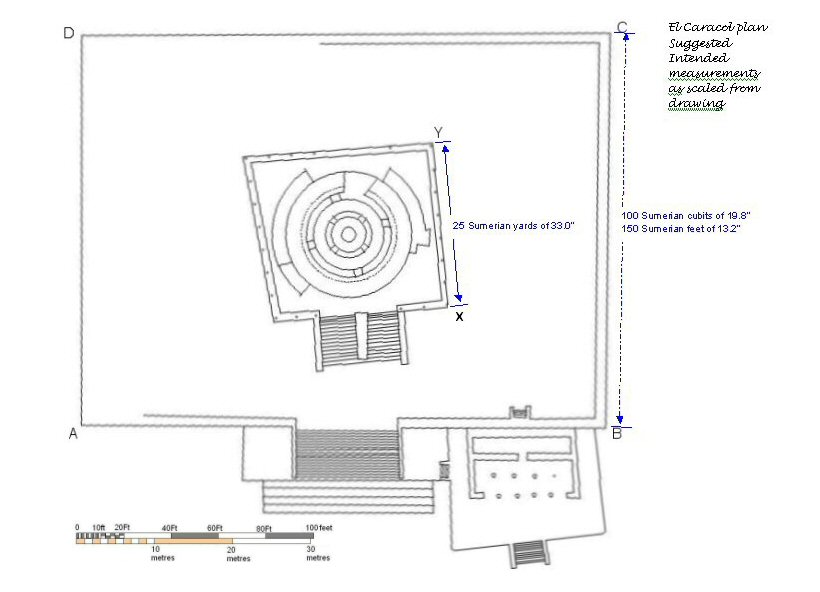
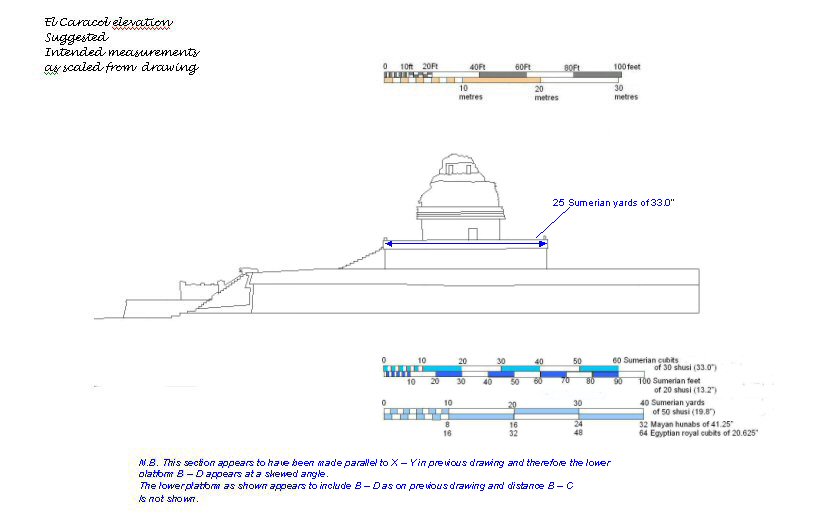

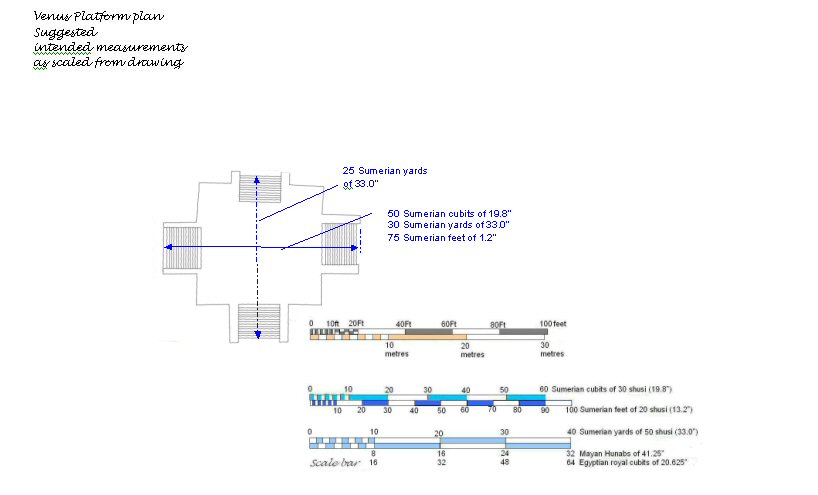
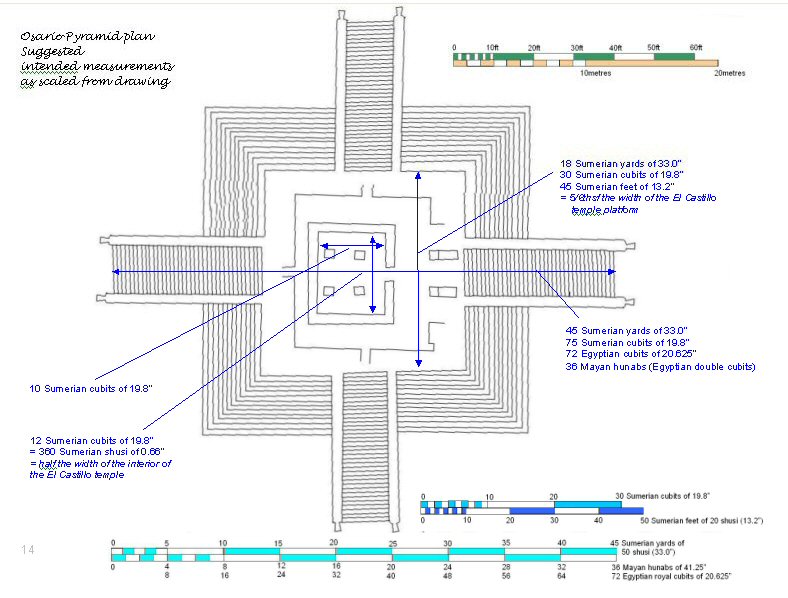
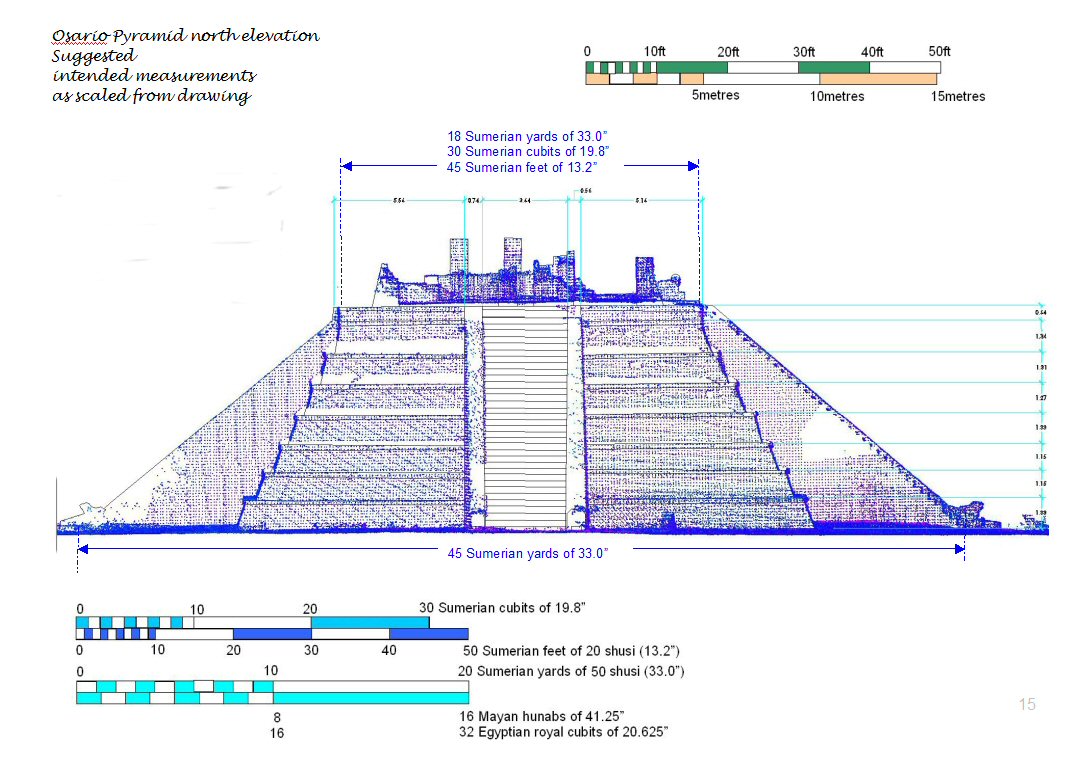
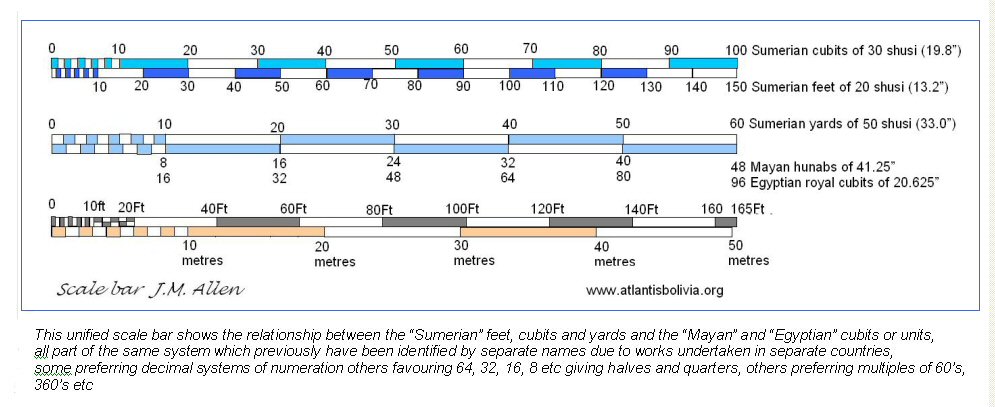
Click here for Tiwanaku calendar
Click here for Atlantis stade
Click here for cubits between altiplano canals
Click here for Teotihuacan measuring unit
Click here for citadel cubits, Teotihuacan measuring unit
Click here for Monte Alban, measuring units
Jim Allen, 23 June 2009
email webatlantis@hotmail.com